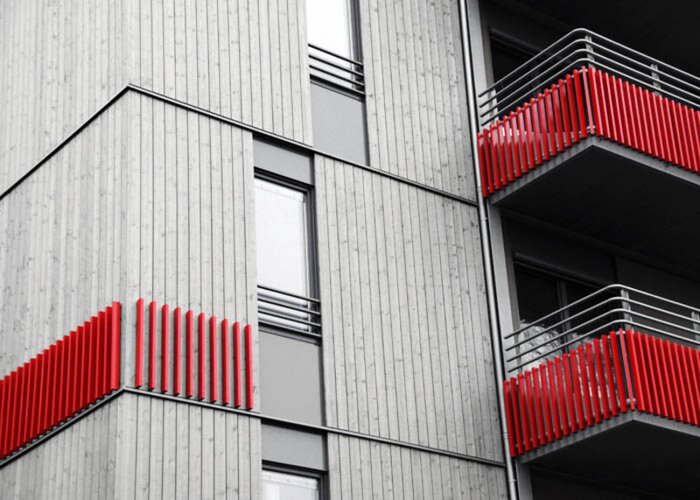
Long-lasting and naturally beautiful wood facades in no time at all
The appearance and durability of wood facades depend on a number of factors: the type of wood, the quality of wood, the pretreatment of the wood surface and the subsequent surface treatment.
TYPES OF WOOD FOR THE FACADE
All domestic types of softwood are basically suitable for constructing facades; in Germany and Austria, spruce wood is used above all, sometimes also larch.
THE TYPE OF PRETREATMENT INFLUENCES THE SERVICE LIFE
The type of pretreatment plays an important role for the service life of the subsequent paintwork applied. A dry, resin-free and absorbent substrate is ideal. This results in a very good in-depth effect of the impregnation (=transports the active substances into the wood), a very good anchor for the top coating and an homogeneous colour formation.
-
Rough-sawn: rough-sawn wood generally has a very high absorption capacity. This means the coating is brilliantly absorbed. It is important to clean loose particles of wood off the rough-sawn surface before being coated. (See sample in the picture gallery)
- Brushed surface: brushing in the direction of the grain removes soft young wood from the surface, thereby achieving a textured surface. The wood is given a modern, rustic look. (See sample in the picture gallery)
THE COATING PRESERVES THE NATURAL QUALITY OF WOOD FACADES
Wood facades are coated as a rule to give them better protection against the weather and environmental factors, blue stain, fungi and insects. At the same time, this also prevents uneven greying and unwanted colour differences.
An even, (silvery) premature greying, the so-called patina effect, is increasingly used by architects as a design element. This effect can be achieved quite easily with the ADLER products Pullex Silverwood, Pullex Platin or Lignovit Platin. These products guarantee maintenance-free and lasting protection without impairing the natural quality of the wood facade.
ADLER RECOMMENDS THE FOLLOWING COMBINATIONS FOR A MAINTENANCE-FREE AND EVENLY GREYED FACADE:
- Spruce/rough-sawn: spruce is good to work with and absorbs surface treatments very well. The drying process is fast and without difficulties. For the subsequent coating, you are best off using Lignovit Platin, Pullex Silverwood or Pullex Platin. (See sample in the picture gallery)
- Spruce/brushed: : brushing fully brings out the grain. Combined with the silvery pigments of Pullex Silverwood or Lignovit Platin, the result is exciting light effects and interesting facade designs. (See sample in the picture gallery)
Reference Projects:
- Pullex Silverwood on spruce: children and family centre in Poppenweiler
- Pullex Silverwood on spruce in the colour Graualuminium [grey aluminium]: Wolfegg Farmhouse Museum
- Lignovit Platin on spruce in the colour Quarzgrau [quartz grey]: high-rise apartment block
- Pullex Silverwood on spruce in the colour Silber [silver] / Farblos [colourless]: bathhouse on the shore of Attersee lake
© by adler-lacke.com
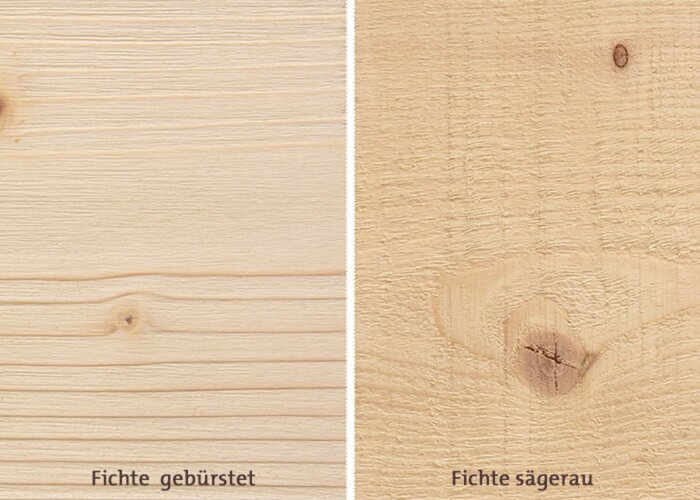
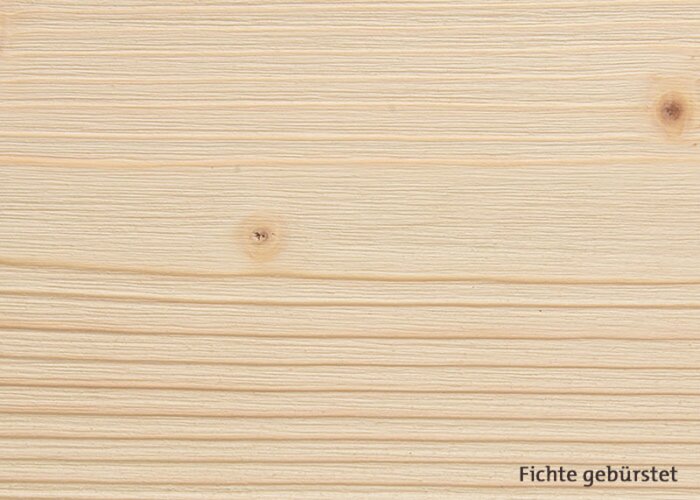
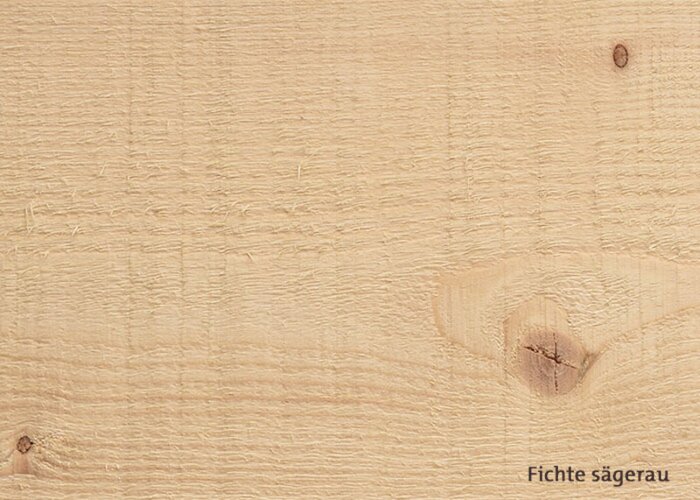
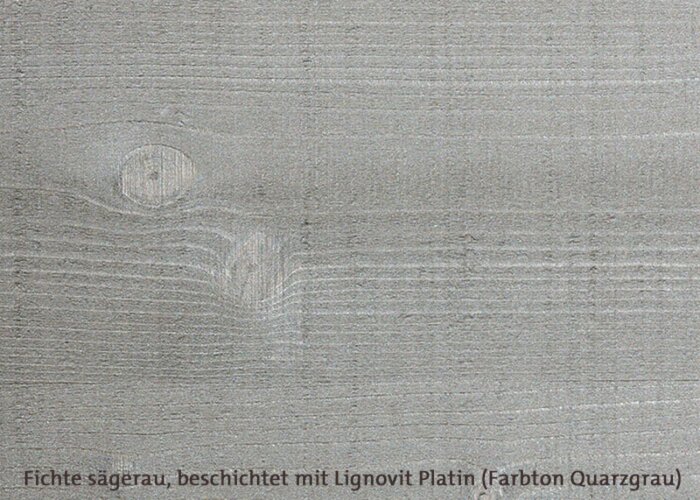
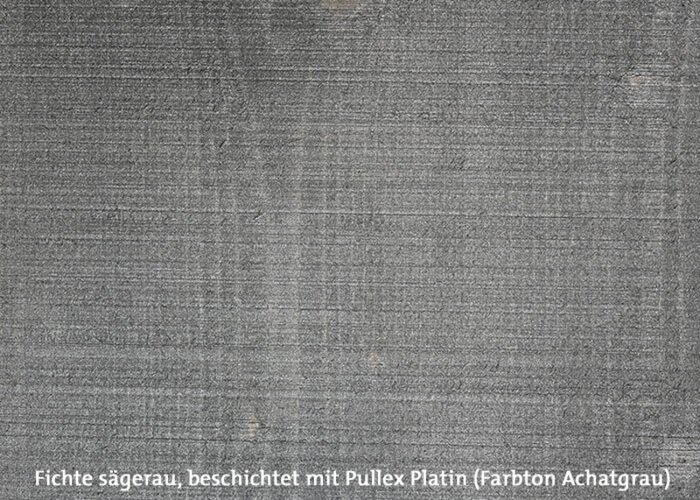
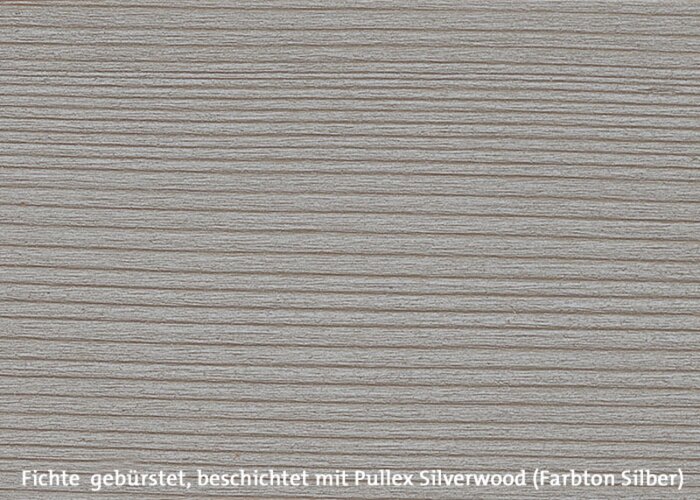
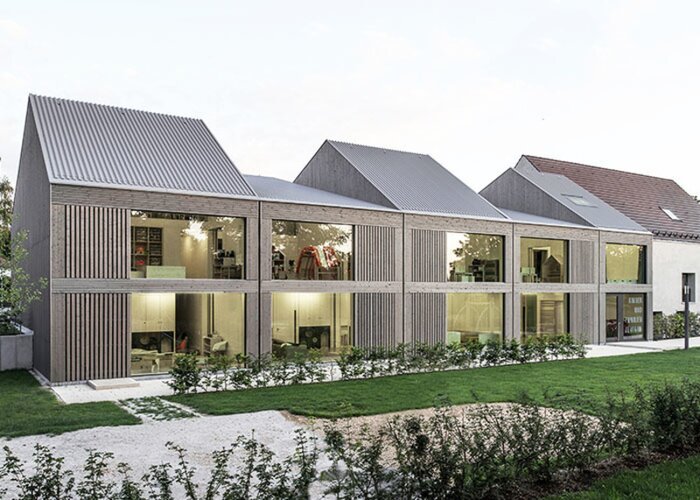
![Wolfegg Farmhouse Museum: Pullex Silverwood on spruce in the colour Graualuminium [grey aluminium] © Dennis Müller Wolfegg Farmhouse Museum: Pullex Silverwood on spruce in the colour Graualuminium [grey aluminium] © Dennis Müller](/legacy/user_upload/news_gallery/2317/image-thumb__2317__content-slider__img/adler-bild01-silberner_schuppen-fotohinweis_dennis_mueller.b252b4e1.jpg)
![Bathhouse on the shore of Attersee: the house by the lake was coated with Pullex Silverwood in the colour Silber [silver]/Farblos [colourless] © Edith Maul-Röder Bathhouse on the shore of Attersee: the house by the lake was coated with Pullex Silverwood in the colour Silber [silver]/Farblos [colourless] © Edith Maul-Röder](/legacy/user_upload/news_gallery/2318/image-thumb__2318__content-slider__img/adler-referenz-badehaus.a8e40d58.jpg)
